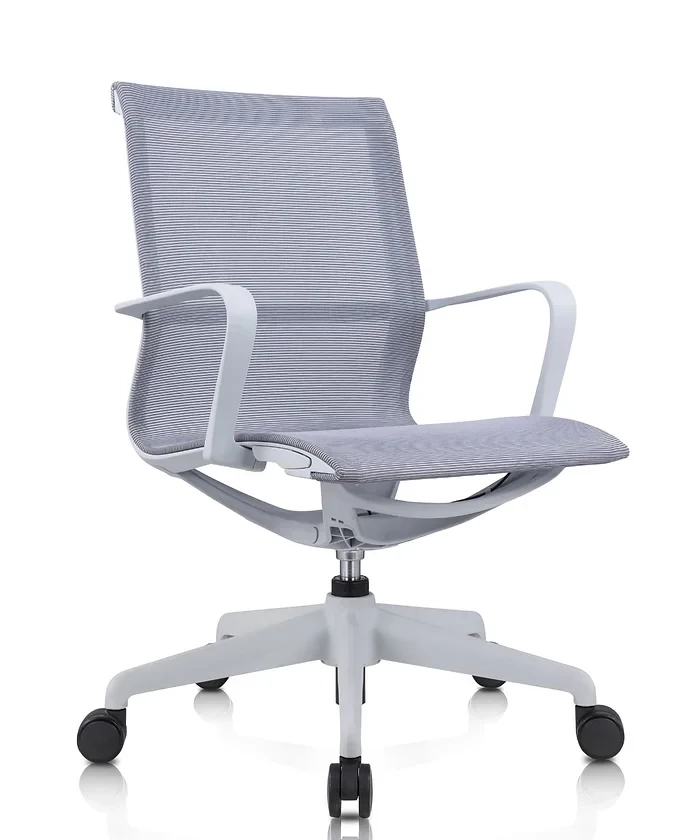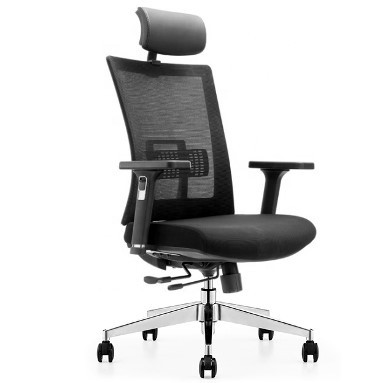
How to Choose an Office Chair for All-Day Typing Comfort
Introduction
Typing for hours requires more than just a quality keyboard—it demands a chair that can keep up with your posture, wrist angle, and concentration. If you're spending your day drafting documents, coding, or answering emails, an uncomfortable chair can lead to fatigue, wrist pressure, and long-term discomfort. In this article, we'll walk through the essential features to look for in an office chair designed specifically for typing comfort and productivity. From seat support to armrest adjustability, every detail matters when your job depends on how you sit.
1. Seat Cushioning That Supports Extended Sitting
Typing for long periods requires a seat that offers consistent support without going flat. High-density foam or molded cushioning contours to your body while preventing pressure buildup. Look for chairs with breathable fabric and a gently sloped front edge to reduce stress under your thighs.
2. Adjustable Armrests to Support Your Forearms
When typing, your arms should rest naturally at a 90-degree angle. Chairs with height-, width-, and depth-adjustable armrests help prevent wrist strain and shoulder tension. This reduces the risk of repetitive stress injuries and keeps your arms in line with your keyboard.
3. Ergonomic Lumbar Support to Maintain Spine Alignment
Lower back support is crucial when sitting for hours. Chairs with built-in lumbar adjustment or dynamic lumbar zones help maintain the natural curve of your spine. This reduces back pain and supports an upright typing posture.
4. Breathable Backrest for Comfort Throughout the Day
Typing builds heat over time, especially in the back area. A mesh backrest promotes airflow, keeping your body cool and reducing sweat. This allows for better comfort and fewer distractions during long sessions.
5. Seat Height Adjustment for Optimal Typing Angle
Proper seat height ensures that your elbows stay level with your keyboard and your feet rest flat on the floor. Pneumatic seat height adjustment gives you quick control to align your typing angle perfectly, helping to avoid wrist flexion and fatigue.
6. Waterfall Seat Edge to Promote Leg Circulation
A waterfall-edge seat design reduces pressure behind your knees and supports proper blood flow. This is especially important for people who type continuously and don’t change position often throughout the day.
7. Recline and Tilt Control for Short Breaks
Even during long typing sessions, moments of rest are key. A reclining feature lets you lean back during brief breaks, resetting your posture and reducing muscle fatigue. Synchro-tilt options ensure your spine stays aligned as you recline.
8. Stable Base and Smooth Movement
Typing requires concentration, but you’ll still move around slightly—whether to reach for files or shift positions. A five-point base with smooth casters provides balance and mobility, supporting your movements without distraction.
9. Compact Design for Desk Compatibility
If your desk setup is tight, a compact chair with a slim profile will help. Look for models that tuck easily under your desk and don’t interfere with your typing area while still offering ergonomic features.
10. Adjustable Backrest Tension for Personalized Support
The ability to fine-tune backrest tension helps you customize how much resistance you feel when leaning back. This allows for a more dynamic sitting experience while keeping you supported during typing marathons.
Additional Considerations for Typing-Focused Seating
11. Posture Awareness and Core Engagement
Some chairs are designed to encourage active sitting, promoting subtle core engagement. This keeps your posture aligned and reduces slouching during prolonged typing sessions.
12. Headrest or No Headrest?
While headrests aren’t always needed for typing, a removable or adjustable one can provide support during short pauses or calls without interfering with forward-focused work.
13. Armrest Padding for Comfort
Firm but cushioned armrests prevent elbow pressure and allow for longer typing sessions without discomfort. Choose armrests that feel supportive, not too soft or too rigid.
14. Chair Depth Adjustment for Leg Fit
A seat depth adjustment feature ensures that the back of your knees doesn’t press too firmly into the seat edge. This offers better comfort and is especially useful for users of varying heights.
15. Silent Mobility for Minimal Distractions
Smooth, quiet casters help you move without distracting noise—ideal for shared offices or when you want to stay focused on typing without disruptions.
16. Durable Upholstery for Daily Use
Typing chairs experience constant daily wear. Choose materials that are both breathable and long-lasting, such as high-quality mesh or woven fabric, that withstand frequent use without tearing or sagging.
17. Easy-to-Reach Adjustment Levers
Typing sessions often involve mid-task adjustments. Chairs with conveniently placed levers let you tweak your position without stopping your workflow or standing up.
18. Compatibility with Typing Accessories
Your chair should work seamlessly with keyboard trays, wrist rests, and ergonomic desk setups. Check if the armrest height and base size complement your current workspace.
19. Foot Support and Floor Contact
If your feet don’t touch the ground properly, circulation suffers. Ensure your chair allows for stable foot contact, or use a footrest to maintain ergonomic posture.
20. Long-Term Typing Health Benefits
Choosing the right typing chair goes beyond comfort—it helps prevent repetitive strain injuries, improves your posture, and enhances long-term wellness at work.
Recommended Products

-
Finmon Mesh Office Chair – Grey
The Finmon chair combines breathable mesh with excellent lumbar support and adjustable armrests—ideal for typing-focused tasks. Its minimal design fits neatly into tight workstations.
-
Sujaan Mesh High Back Ergonomic Chair
Designed for all-day use, the Sujaan chair offers a high back for full support, adjustable features for ergonomic positioning, and a waterfall seat that encourages circulation during extended typing.
Final Thoughts
Typing all day can take a toll on your body if you don’t have the right support. From wrist alignment to lower back comfort, your office chair plays a key role in maintaining focus and avoiding strain. Look for chairs that provide height adjustability, lumbar support, breathable materials, and adaptive armrests to match your workflow. By investing in the right ergonomic chair, you’re also investing in better posture, higher productivity, and long-term typing comfort.
FAQ
What kind of chair is best for typing all day?
An ergonomic chair with lumbar support, adjustable armrests, breathable backrest, and a waterfall seat edge is best for long typing sessions.How should I sit while typing to avoid pain?
Keep your elbows at a 90-degree angle, wrists in a neutral position, feet flat on the floor, and your back supported by lumbar padding.Are mesh chairs good for long typing hours?
Yes, mesh chairs provide airflow and support, keeping you cool and comfortable during extended typing periods.Can armrests help with typing comfort?
Absolutely. Properly adjusted armrests relieve pressure from your shoulders and wrists, supporting better posture while typing.


